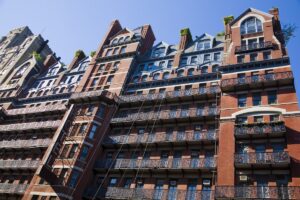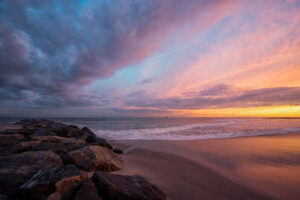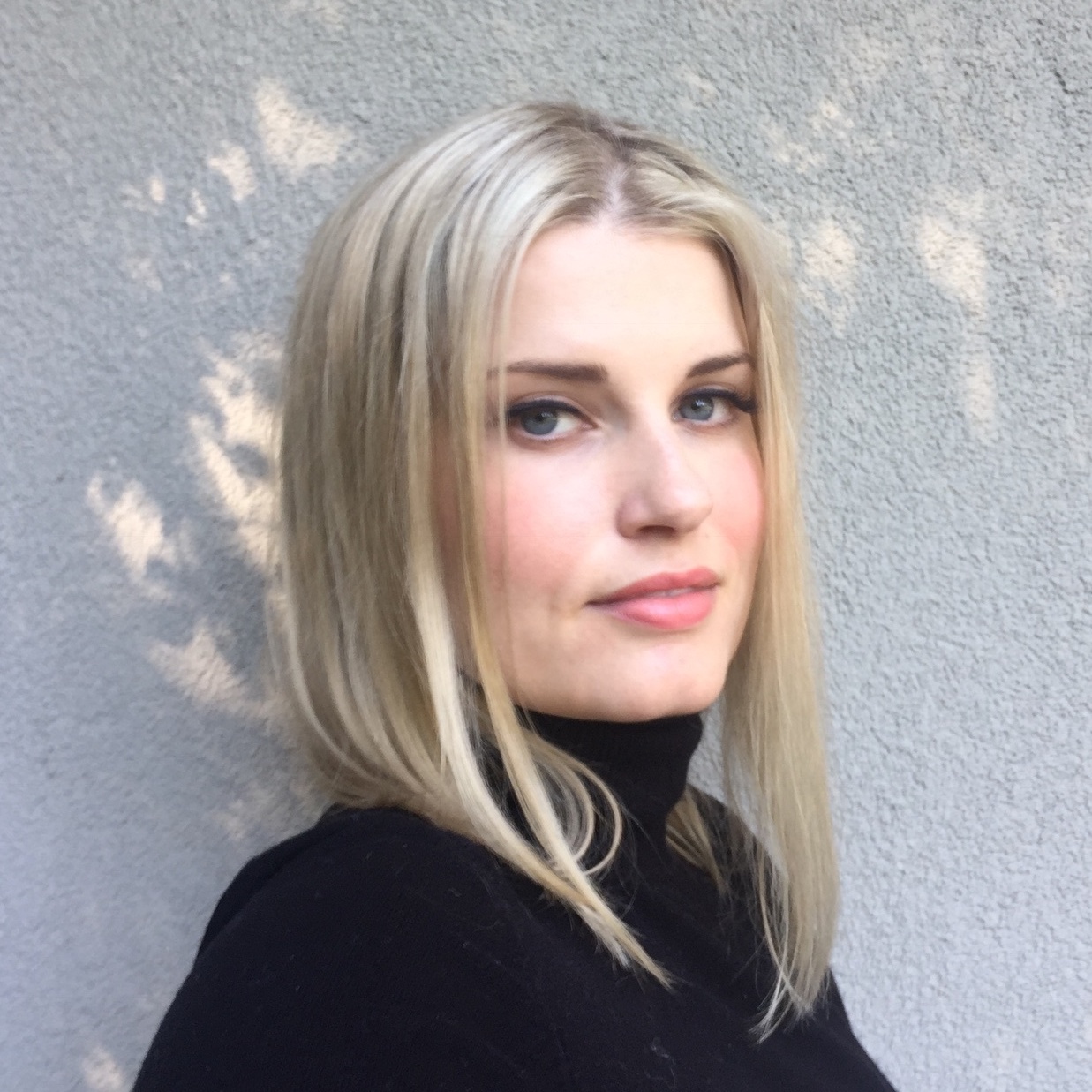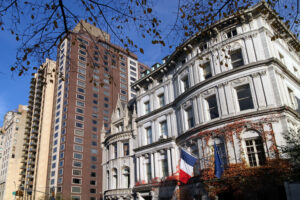February is Black History Month, an annual celebration of the countless contributions of African-American leaders, artists, activists, politicians, athletes and beyond. In honor of this month-long observation, we’ve taken a look at the New York City parks, playgrounds, and streets named after influential African Americans — and there are many. This list certainly isn’t definitive: We’ve omitted statues, as well as semi-private spaces like the Jackie Robinson Rotunda at Citi Field. But it’s a start at recognizing all the NYC places named for African Americans — just as the place names themselves are a start toward recognizing the enormous impact of African-Americans on our nation’s culture, knowledge, and well-being.
The Bronx
East 164th Street between Cauldwell Avenue and Boston Road, Bronx
This Morrisania garden honors Sergeant Cornelius H. Charlton, a Korean War hero who served when the military was still partially segregated. While in battle, Charlton took control of his platoon when his commander was wounded and carried out several attacks even while facing injuries himself. The Bronx park pays homage to the bravery of Charlton, who died in battle after his heroic feats.
Grant Avenue and East 169th Street, Bronx
Located in the South Bronx, the Dred Scott Bird Sancutuary is named after the iconic Dred Scott, an African-American slave who sued for his and his family’s freedom in the famous 1857 case Dred Scott v. Sanford. Children and adults can enjoy this natural oasis and the birds that stop by this sanctuary along their migration paths.
Third Avenue to Fulton Avenue between East 167th Street and East 168th Street, Bronx
Named after Estella Diggs, the first African American woman to represent the Bronx in the New York State Assembly, this park was built from an abandoned plot of land sorely in need of revitalization. Now, the Estella Diggs park offers up one square block of greenery and benches for locals to enjoy.
Austin Place at East 149th Street, Bronx
This small pedestrian triangle got its namesake from one of the most influential African-American figures of all time, Martin Luther King Jr., a gifted orator who dedicated his life’s work to civil rights.
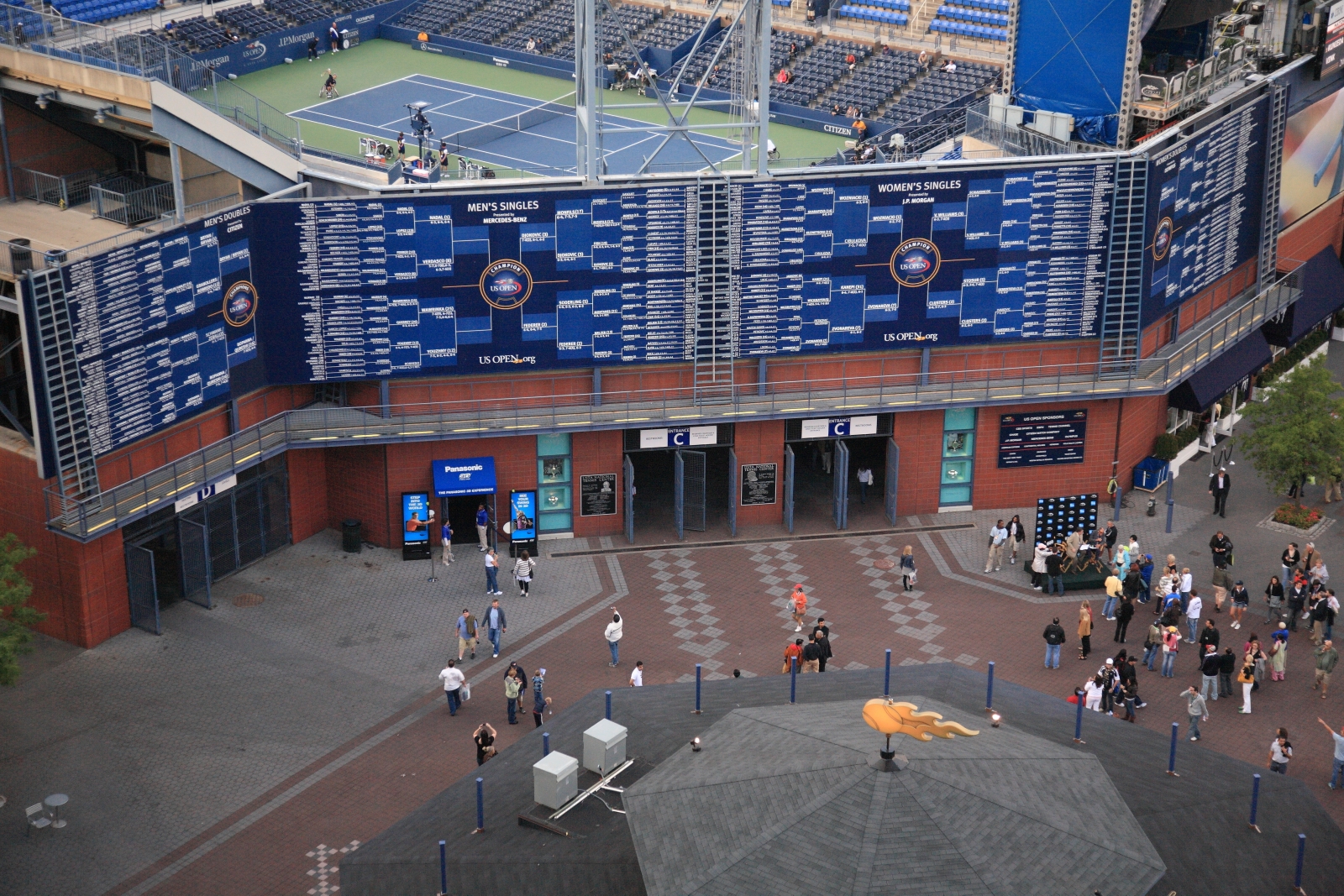
Was Louis Armstrong a tennis fan? Not sure, but he did live in Queens, and the stadium that now hosts the U.S. Open is named for him.
Brooklyn
Macy Avenue between Lafayette Avenue and Kosciuszko Street, Brooklyn
Brooklyn’s Banneker Playground is named after Benjamin Banneker, an African-American writer and mathematician who lived from 1731 to 1806.
Bob Marley Boulevard
Church Avenue (between Remsen Avenue & East 98th Street), Brooklyn
In East Flatbush, the city co-named part of the busy Church Avenue for Bob Marley, the famous Jamaican songwriter and musician.
Sumpter Street to Marion Street between Howard Avenue and Ralph Avenue, Brooklyn
Carver Playground was named for George Washington Carver, an African-American scientist, inventor and teacher. Born into slavery, Carver was a brilliant mind and agricultural researcher who accomplished innovative work in plant biology.
Classon Avenue between Fulton Street and Lefferts Place, Brooklyn
This Brooklyn playground was named after Crispus Attucks, a runaway slave who was killed in the Boston Massacre after he joined a crowd that was protesting British troops. He is believed to be the first death of the American revolution, and this playground honors him in life and death.
Detective Dillon Stewart Playground
Prospect Park, Brooklyn
Located in Brooklyn’s sprawling Prospect Park, Detective Dillon Stewart Playground is named for a NYC police detective who was killed on duty in 2005. Detective Stewart was only 35 years old and had served for five years when he died. This playground honors his service and heroism.
Mother Gaston Boulevard and Sutter Avenue, Brooklyn
It’s only fitting that Dr. Richard Green, who served as NYC’s first African-American chancellor of education, now has a playground named after him, honoring his considerable contribution to children and youths.
Eastern Parkway, Washington Avenue, and Classon Avenue, Brooklyn
Named for physicist and astronaut Dr. Ronald McNair, this park honors an incredible man’s legacy. As one of the American astronauts killed in the Challenger disaster, this park pays respect to an African American who dedicated his life to science.
Dekalb Avenue, Adelphi Street and Carlton Avenue, Brooklyn
This Brooklyn playground was named in honor of Ronald Edmonds, an educator and writer who impacted city schools and worked on initiatives to improve education quality for the poorest children.
Macdonough Street between Malcolm X Boulevard and Stuyvesant Avenue, Brooklyn
Named for the famous civil rights leader El-Hajj Malik el-Shabazz — also known as Malcolm X — this considerable Bed-Stuy playground features basketball courts and several play areas.
Christopher Avenue, Riverdale Avenue, Newport Street, and Mother Gaston Boulevard, Brooklyn
These Brooklyn fields were named after boxing champion Floyd Patterson, who had a 19-year career that included 55 wins, eight losses, one draw and 40 knockouts — incredible professional statistics. His namesake fields are now used for a variety of sports, including football, soccer, and baseball, along with a performance amphitheater.
Hattie Carthan Community Garden
654A Lafayette Avenue, Brooklyn
Hattie Carthan, a Bed-Stuy resident with a passion for trees and nature, played a pivotal role in improving greenery and overall conditions in her neighborhood. The Hattie Carthan Community Garden was then joined by the adjacent Hattie Carthan Community Market, a farmers market dedicated to fresh produce, food justice, and agricultural revitalization led by people of color.
Marcy Avenue, Tompkins Avenue, between Greene Avenue and Lafayette Avenue, Brooklyn
This was one of Brooklyn’s first parks, and is now home to a baseball field, fitness equipment, a cultural arts center, and an outdoor amphitheater. The park was named for Herbert Von King, a Brooklyn resident that was so involved in community affairs that he was affectionally called “Mayor of Bed-Stuy.”
Glenmore Avenue between Powell Street and Sackman Street, Brooklyn
This Brooklyn park is named after Charles Hamilton Houston, a black lawyer whose work was dedicated to ending segregation. Throughout his career, he played a key role in dismantling racist Jim Crow laws, and even helped to train Supreme Court justice Thurgood Marshall, the court’s first African-American justice.
Jackie Robinson Parkway
Brooklyn and Queens
This parkway, which runs through Brooklyn and Queens, was renamed for baseball legend Jackie Robinson in 1997.
93 Street to East 94 Street, between Lenox Road and Clarkson Avenue, Brooklyn
The Kennedy-King playground is another playground named for Dr. Martin Luther King, Jr., and shares its namesake with President John Fitzgerald Kennedy. Both leaders were assassinated at the peak of their careers, and this park simultaneously honors each man.
Underhill, Pacific, Washington and Atlantic Avenues, Brooklyn
This small traffic triangle, along with its bronze portrait bust of Reverend Benjamin Lowry, pays homage to the former leader of a local Zion Baptist Church.
Martin Luther King, Jr. Playground
Dumont Avenue, Blake Avenue between Bradford Street and Miller Avenue, Brooklyn
This is just one of many NYC public spaces dedicated to the incredible Dr. Martin Luther King, Jr. Children can run and play and swing in this Brooklyn park named after the key African-American leader.
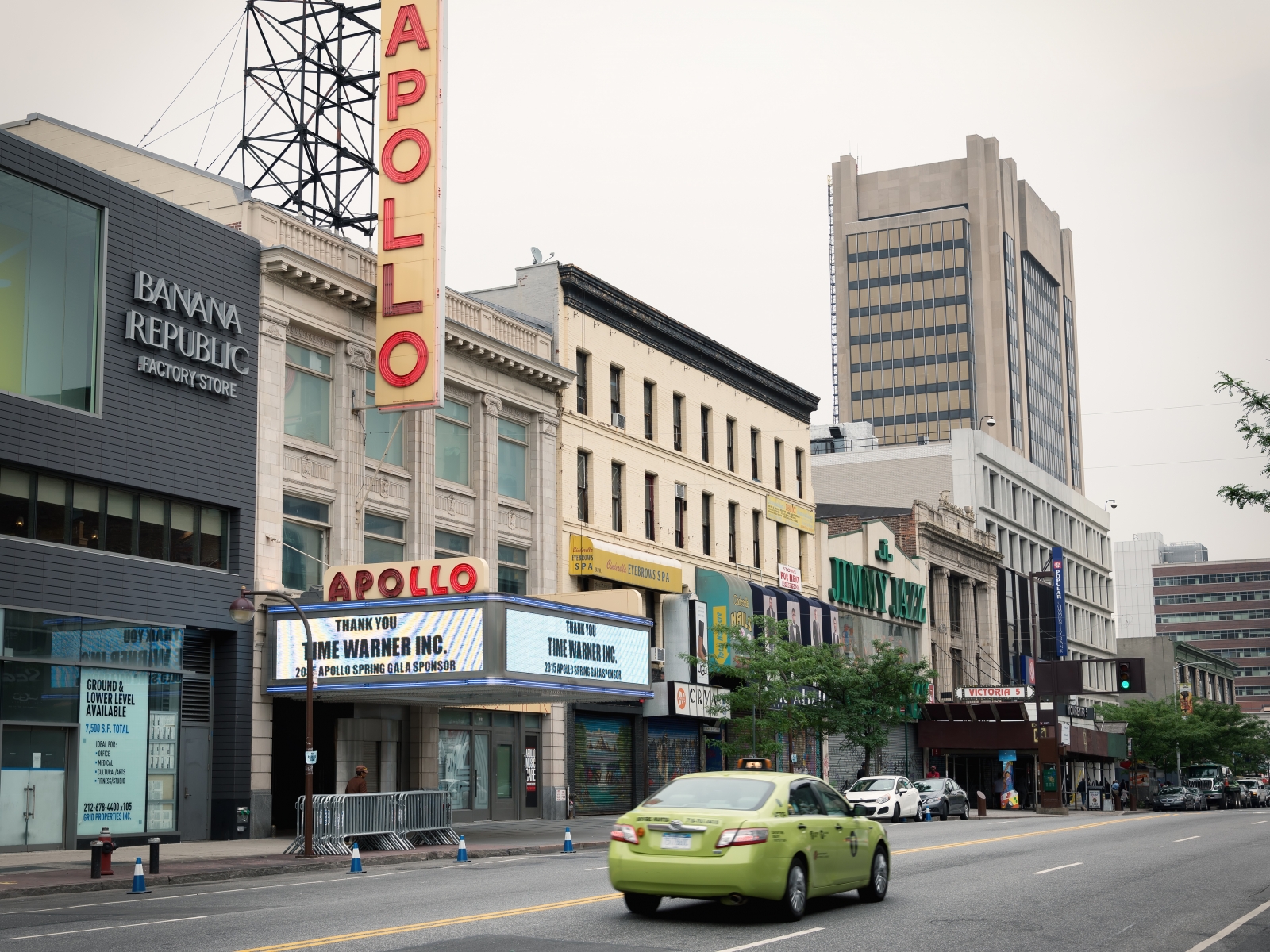
In Manhattan, 125th Street is co-named Martin Luther King, Jr. Boulevard.
Martin Luther King, Jr. Place
Brooklyn
This tiny street in Brooklyn’s Bed-Stuy neighborhood was renamed for MLK six years after his assassination, in 1974 — yet another NYC way to honor the African-American leader.
Malcolm X Boulevard between Chauncey Street and Marion Street, Brooklyn
Known as the man who “broke the color barrier” in baseball, Jackie Robinson was a phenomenal athlete and civil rights activist. This Brooklyn park honors Robinson, who was the first black athlete to play in Major League Baseball, and earned the title Rookie of the Year in 1947 and National League MVP in 1949.
Lafayette Avenue between Stuyvesant Avenue and Malcom X Boulevard, Brooklyn
This playground is named after the famed track and field star Jesse Owens, who won four gold medals at the 1936 Berlin Olympic Games. Despite their incredible talent, Owens and fellow black athletes experienced racism both on the international stage and back home, and this playground honors one of the world’s most accomplished runners of all time.
Potomac Playground (David Ruggles Playground)
Tompkins Avenue between Halsey Street and Macon Street, Brooklyn
This sprawling Bed-Stuy playground and adjacent school is named after David Ruggles, who committed his life to African American equality. As an ardent abolitionist, Ruggles worked with the Underground Railroad to help slaves escape to freedom in Canada.
Brower Park, Brooklyn (St. Mark’s Avenue, Park Place between Brooklyn Avenue and Kingston Avenue)
As the first African-American woman elected to the U.S Congress, Shirley Anita St. Hill Chisholm made a slew of achievements, including her roles as politician, educator and social rights advocate. As an educator, Chisholm often taught classes in Brower Park, and this section of the park now officially shares her name.
Manhattan
Adam Clayton Powell Jr. Boulevard
Seventh Avenue, Manhattan
Seventh Avenue, a thoroughfare on the west side, was named Adam Clayton Powell Jr. in 1974, after the influential U.S. representative and clergyman who was a driving force in the civil rights movement.
7 Avenue, St Nicholas Avenue, West 117th Street, Manhattan
Previously named Dewey Square in honor of Admiral George B. Dewey, who served during the Spanish American War, this Harlem site now honors Asa Philip Randolph, a leader, organizer and activist in the 1900s. Randolph founded and lead the Brotherhood of Sleeping Car Porters in 1925, the first African-American labor union.
A. Philip Randolph Boulevard
145th Street, Manhattan
In 2009, Harlem’s 145th street was officially renamed A. Philip Randolph Boulevard, to pay respect to the important African-American leader and union organizer.
Bill “Bojangles” Robinson Playground
150th Street and Seventh Ave., Manhattan
Bill Robinson was not just a performer, he was a legend. This playground was named after Robinson, who rose to fame because of his tap dancing prowess and Broadway and film performances.
Booker T. Washington Playground
West 107 Street to West 108th Street, Columbus Avenue and Amsterdam Avenue, Manhattan
Born into slavery, Booker T. Washington was a teacher, activist and leader. Although Washington clashed with other important African-American thinkers because of his attitudes towards race relations, he remained an important figure and leader of his time period, which this playground recognizes.
West 145th Street to West 143rd Street, Lenox Avenue, and Harlem River, Manhattan
Charles Young was only the ninth African-American to ever be admitted to West Point Military Academy, and went on to serve in the Spanish-American War and in the Philippines; he then became the first African-American military attaché in U.S. history by serving in Haiti and Liberia.
Fifth Avenue, West 130th Street to West 131st Street, Manhattan
This Harlem playground was named after Courtney Callender, the first African American to serve as NYC’s Deputy Commissioner of Cultural Affairs.
6 Edgecombe Avenue (off of West 136th Street), Manhattan
This square was named for Dorrence Brooks, who fought valiantly and died in Europe during WWI. Brooks served during a time when black soldiers were segregated and couldn’t even receive aid from the Army Nurse Corps or the Red Cross. Despite such discrimination, Brooks was known to have fought valiantly.
Lexington Avenue between East 122nd Street and 123rd Street, Manhattan
This Harlem park is another New York City space named for astronaut Ronald McNair, who died in the tragic Challenger space shuttle explosion of 1986. Before the crash, McNair had successfully completed a space mission and was known beyond his intellect for his musical talent and karate abilities.
Duke Ellington Boulevard
West 106th Street, Manhattan
This Upper West Side thoroughfare was renamed Duke Ellington Boulevard in 1977, an homage to the iconic jazz musician Duke Ellington.
Frederick Douglass Boulevard
Eighth Avenue, Manhattan
The stretch of Eighth Avenue north of Frederick Douglas Circle (110th Street) was renamed Frederick Douglass Boulevard in 1977, in honor of abolitionist and human rights activist Frederick Douglass.
Amsterdam Avenue between West 100 Street and West 102 Street, Manhattan
Located in Manhattan’s Upper West Side, this playground — once again dedicated to the esteemed abolitionist Frederick Douglass — has children’s playing equipment, along with a pool, basketball courts and a nearby playing field.
155th Street, Eighth Avenue to Harlem River Drive, Manhattan
This playground remembers Holcombe Rucker, a born-and-raised New Yorker who became a pivotal playground director for the city’s Parks and Recreation department. Known for his basketball tournament, Rucker emphasized the importance of education paired with recreation, and did so by tutoring players and encouraging academic success with basketball playing time.
Bradhurst Avenue and Edgecombe Avenue West 145th Street, Manhattan
In addition to the Brooklyn park named after the incredible Jackie Robinson, this expansive Harlem park and recreation center features an array of options for community use. The park has baseball diamonds, basketball and volleyball courts, playgrounds, a pool, weight room, gymnasium, library, computer resource center and more.
James Weldon Johnson Playground
115 Street between Third Avenue and Lexington Avenue, Manhattan
This Harlem park is named for James Weldon, who founded The Daily American, the country’s first African-American focused daily newspaper. Beyond his journalistic writing, Weldon practiced law as an attorney, studied music, wrote poetry, wrote a novel, served as executive secretary of the NAACP, and taught creative writing, among other pursuits.
Amsterdam Av, W 143 St and Hamilton Pl, Manhattan
This small Hamilton Heights park (formerly known as Hamilton Square after Alexander Hamilton) was renamed in 1984 to honor Johnny Hartman, a talented jazz vocalist.
Malcolm X Boulevard
Lenox Avenue, Manhattan
In late 1987, Lenox Boulevard — which had been named for Philanthropist James Lenox in 1887 — was co-named Malcolm X Boulevard, to remember the courageous black activist.
Madison Avenue, East 120th Street to East 124th Street, Manhattan
Named after noted Pan-African and Black Nationalist leader Marcus Garvey, this Harlem park honors the man, a Harlem transplant originally from Jamaica.
Martin Luther King, Jr. Playground
Lenox Avenue, West 113th Street to West 114th Street, Manhattan
Not to be confused with Brooklyn’s Martin Luther King, Jr. Playground, this Harlem playground and basketball court is yet another NYC public space honoring one of the greatest African-American leaders of all time.
Madison Avenue between East 130th Street and East 131st Street, Manhattan
Harlem’s Moore Playground was named after journalist, editor, activist and leader Frederick R. Moore, who served as a vital force in the African-American community. By encouraging black people to start businesses, as well as writing and editing for some of the country’s most prominent African-American magazines and newspapers, Moore acted as a key leader and voice.
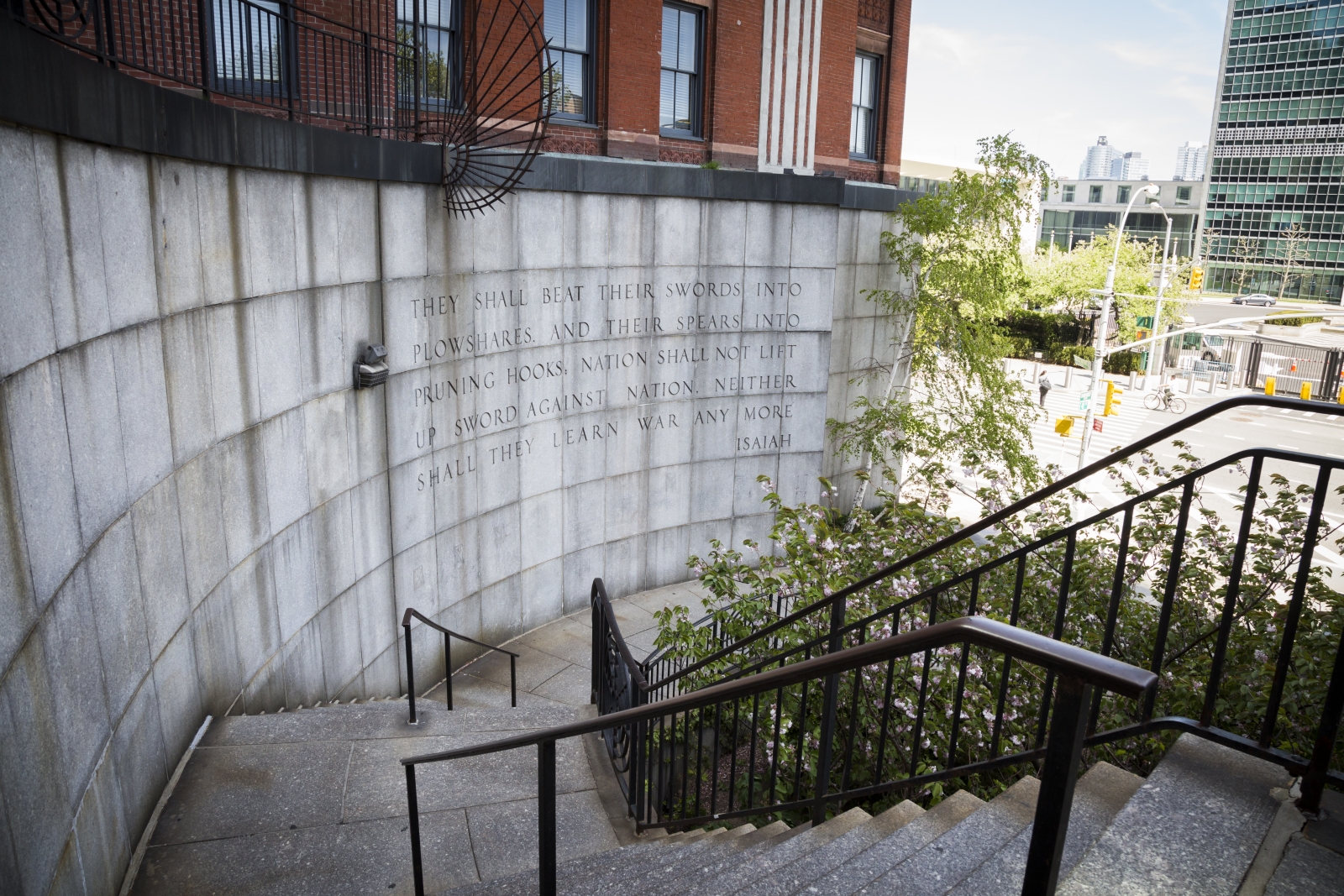
Ralph Bunche Park sits just across from the U.N. Building in Manhattan.
First Avenue, between East 42nd Street and East 43rd Street, Manhattan
Located right across from the United Nations, this park is named after Ralph Bunche, known for his work in education, political science, and at the United Nations. His work earned him a Nobel Peace Prize in 1950, one of the most prestigious awards in the world.
Reverend Linnette C. Williamson Memorial Park
65 West 128th Street, Manhattan
This park was originally built in 1965 as the first vest-pocket park in the city (and the country!), and it was seen as a key fixture of future of urban planning and design. Named after Reverend Linnette C. Williamson, a key community leader, activist and vest-pocket park proponent, the park has since been renovated and did impact feelings towards public space and land usage, no matter how small it may be.
Rev. Dr. Martin Luther King Jr. Boulevard
125th Street, Manhattan
Manhattan’s 125th street is co-named Martin Luther King, Jr. Boulevard, another of the city’s many ways of honoring the famed African-American activist and reverend.
W.E.B. DuBois Avenue
Bradhurst Avenue (West 141st Street to 155th Street)
Named after the esteemed scholar, writer and founder of the NAAC, Manhattan’s Bradhurst Avenue became W.E.B. DuBois Avenue in 2009.
Queens
124-02 Roosevelt Avenue, Queens
Arthur Ashe was a world-class tennis player and the first African American to win Wimbledon and the U.S. Open singles tournaments. Now, Arthur Ashe Stadium is the main court in Flushing Meadows, which hosts the annual US Open tennis tournament.
40 Road between Prince Street and Main Street, Queens
This Queens playground remembers James A. Bland, a talented folk song writer and Flushing native.
Louis Armstrong Stadium and Community Center
Louis Armstrong was already a famous jazz musician by the time he moved to Queens, New York. The groundbreaking trumpeter, singer, actor and comedian is one of the most influential jazz players of all time, and this Flushing stadium — which also hosts the annual US Open Tennis Championships — and community center are both named after him.
34-41 137th Street, Queens
This historic house and museum once served as the home of Lewis Latimer, an esteemed inventor. Latimer worked with Thomas Edison and Alexander Graham Bell and contributed to the invention of the telephone, whose importance cannot be overstated.
Merrick Boulevard between 115th Avenue, 116th Avenue, and Baisley Boulevard, Queens
Former NAACP President, Crisis editor, and civil rights activist Roy Wilkins was a vital figure in the African-American community. This Queens recreation center named in his honor now houses a pool, handball, basketball and tennis courts, and a 425-seat theater dedicated to producing socially conscious shows.
GCP Service Road South, 173 Street, Homelawn Street, Queens
The Tepper Triangle honors Bernard Tepper, an NYC fireman who was killed on duty in 1966 putting out a fire. Tepper was a Queens resident who worked for the New York City Fire Department from 1955 until his death.
Staten Island
Broadway, Henderson Avenue, Chappell Street, Staten Island
Named after Corporal Lawrence Thompson, who was killed in action during the Vietnam War, this large Staten Island park has playgrounds, baseball fields, pools, tracks, and a variety of other fields.
—
Hey, why not like StreetEasy on Facebook and follow @streeteasy on Instagram?






